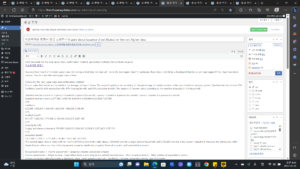2023 standards for the next upper class, confirmation method, application method and certificate issuance
차상위계층 증명서
You may have heard of the term upper class. I’m having a hard time too, but will I be in the next upper class? In particular, these days, I am hit by a heating bill bomb, so can I get support? You must have been curious. How to check the next upper class is here.
Criteria for the next upper class and confirmation method
It is an index that serves as the standard for average income in Korea. The support system is set according to the percentage of median income in the basic livelihood security system. Standard median income 30% livelihood benefit, 40% medical benefit, 47% housing benefit, and 50% education benefit. The amount of income varies according to the number of people in the household.
Standard median income % 1-person household 2-person household 3-person household 4-person household 5-person household 6-person household
Standard median income 2,077,892 3,456,155 4,434,816 5,400.964 6,330,688 7,227,981
30%
livelihood
623,368 1,036,846 1,330,445 1,620,289 1,899,206 2,168,394
40%
medical benefit
831,157 1,382,462 1,773,926 2,160,386 2,532,275 2,891,192
47%
housing benefit
Supply and demand standard 976,609 1,624,393 2,084,363 2,538.453 2,975,423 3,397,151
50%
education benefit
1,038,946 1,728,077 2,217,408 2,700,482 3,165,344 3,613,990
The second-upper class is those with an income of 50% or less in the table above. 1,038,946 won for a single-person household, and 2,700,482 won for a four-person household. However, the criteria also differ depending on where you live, including general property, residential property, financial property, and automobile property.
Recognized income = Income assessment + property’s income conversion amount
Income assessment = Actual income – Expenditure factors according to household characteristics – Work incentive factors – Other additional expenditure factors
Income conversion rate of property = {(property value – basic property amount – liabilities)}} x Income conversion rate by type of property
Type of Property: General Property, Residential Property, Financial Property, Automobile
Basic property: large cities (69 million won), small and medium-sized cities (42 million won), rural areas (35 million won)
Income conversion rate: residential property (1.04% per month), general property (4.17% per month), financial property (4.17% per month), automatic (100% per month)
When dividing the criteria, the estimated income is calculated, but the calculation of the income conversion amount of the property becomes complicated, so it will be convenient to use the welfare homepage.
If the simulated calculation is wrong or difficult, it would be nice to visit the nearest community center and ask for advice.
How to apply
You can bring the required documents such as a copy of your registration, lease agreement, and income documents to the nearest community center where you live and fill out the application form. It would be better if you call the community center in advance and find out the list of screening documents for the next upper class before you go.
Certificate issuance method
If you are selected as the next upper class, you can receive a confirmation letter. Go to the welfare-ro website and apply for service → issue a certificate. Verification of authenticity → You can receive a certificate issued.
If this is difficult, you can bring your ID and get it issued at the nearest community center.